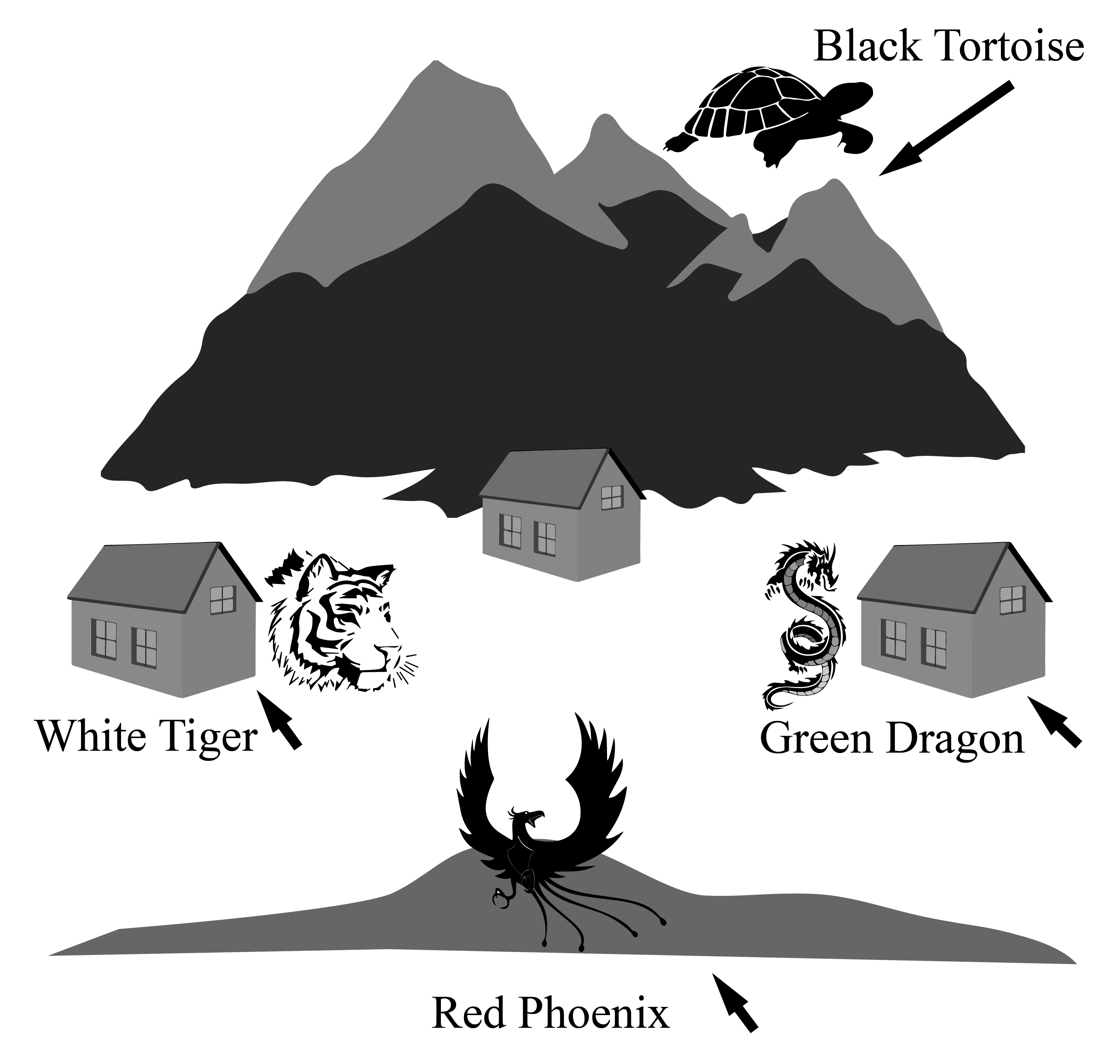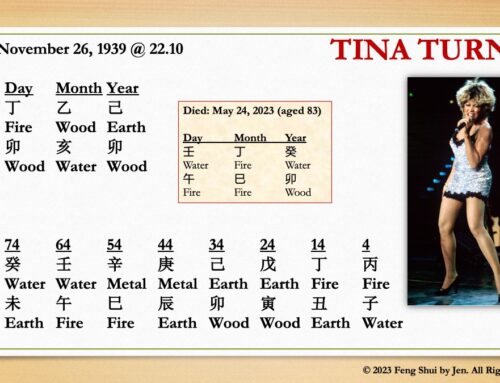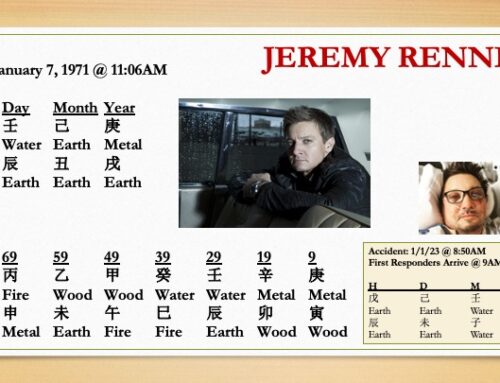Feng Shui Celestial Animals
This is an excerpt from Jen’s book, “The First Guidebook for Feng Shui Enthusiasts,” available on Amazon.com.
Long before the Feng Shui compass was developed, Feng Shui practitioners were also skilled astronomers. They assessed the Qi in the environment by observing the clusters of stars in the heaven and the contours of the land on earth.
As I explained when we talked about the Five Arts in Chapter 5, Feng Shui is the study of the landscape’s appearance. To understand how the abstract energies are influencing an area, you must first examine the natural formations of the land surrounding the property. This method is considered to be the original and oldest technique.
Generally speaking, when a property is said to have “good” forms, it is implied that it was built on land that is “embraced” by the proper positioning of the Four Animals, which we’ll explore below. Such a conclusion is important because it means the landforms surrounding the property are conducive to allowing energy to generate, circulate, and flow naturally, externally and around it.
This is an important step in Classical Feng Shui because, if the goal is to harness positive Qi to support your internal space and endeavors, what better source than your external environment?
People mistake Feng Shui as being only about the internal aesthetics of the property’s design and décor. While the beauty of your internal space plays a factor in the human psyche, this thought is an incomplete one. In Classical Feng Shui, if a property is built on land that does not adequately support it with positive Qi, then it is said that the fortune of the house is already weak.
How do we assess the favorable formation of the land surrounding the property?
In Classical Feng Shui, the Four Celestial Animals provides a means to evaluate and measure your external environment in relation to the property you inhabit. It is also used to locate the best placement of your home (if you were to scout for land to build on). Unfortunately, with land becoming scarcer, and most homes built in urban developments and subdivisions, it’s become more difficult to apply the concept of Forms Feng Shui.
Nonetheless, don’t overlook the principles of Forms Feng Shui, regardless of the type or circumstances of property, because Qi in the environment is always influencing and affecting the whole set-up.
In Forms Feng Shui, a home that is surrounded by positive Qi should have the Four Celestial Animals at each of the four main compass directions (north, east, south, west) outside of the home, embracing the home.
The Four Celestial Animals are referred to as Black Tortoise, Green Dragon, White Tiger, and Red Phoenix. They sound mythical, I know, but the names are simply derived from the shapes or clusters of the star constellations, making it easier to memorize and reference them.

Black Tortoise
The Black Tortoise represents the mountain form that sits behind the property, facing north. Ideally, the mountain should be higher than the property to provide strong protection, support, and stability to the home and those living in the home.
Green Dragon
The Green Dragon references what is on the left side of the house (when viewed from the Main Door looking out). The Green Dragon represents springtime and brings wealth and prosperity to the home. In Forms Feng Shui, this is represented by a low hill, mountain, or neighboring property to the east of the property where the sun rises.
The Green Dragon essentially provides a makeshift “embrace” around the side of the property, protecting it from violent Qi.
White Tiger
Like the Green Dragon concept, the White Tiger references what is on the right side of the house facing out – or west of the house where the sun sets. The White Tiger embrace ensures that whatever Qi is collected does not escape. A low hill or mountain to the right of the house secures and prevents positive Qi from leaving the area.
Red Phoenix
The Red Phoenix references what is at the front of the house facing out – or the south side of the property toward the Sun. The Red Phoenix brings fame, special recognition, and new opportunities to the residents of the home.
Red Phoenix is also commonly referred to as “Table Mountain” formation. This is translated to mean that when you are standing in front of the Main Door of the property looking out, you see the mountain form from a distance. If the height of the mountain is at eye or shoulder height, then it is said that the property has good Table Mountain to “lock in” the Qi and prevent good Qi from leaking away.
Note from Jen: Please don’t interpret the Four Celestial Animals to mean you should buy animal figurines to enhance the external environment of the property! (I’ve seen this – seriously.) Remember, the animal names merely reference the shape it takes from the constellations above, and are used to help us understand how to evaluate the environment easily. The Art of Physiognomy is about natural physical landforms, not man-made figurines!
Copyrighted © 2016-2017 | Feng Shui by Jen™ | All Rights Reserved | Materials may not be copied, translated, or distributed without prior written consent.





